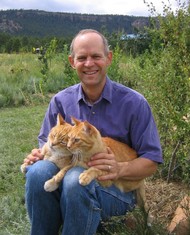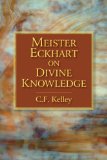Descartes and Animals: What if they also think?
Page 1 of 3 pages 1
2
3
>
- Full Article
 “Before humans shifted into rational thinking, we saw our world as reflections of us; we knew we existed as a part of the great web of existence. And we therefore understood that non-human animals are different from us in degree only. We did not see ourselves as distinct, as a completely separate species. We knew that other animals operate with awareness, understand the world in different, sometimes superior ways, and respond consciously to the world. We saw them with compassion.”
“Before humans shifted into rational thinking, we saw our world as reflections of us; we knew we existed as a part of the great web of existence. And we therefore understood that non-human animals are different from us in degree only. We did not see ourselves as distinct, as a completely separate species. We knew that other animals operate with awareness, understand the world in different, sometimes superior ways, and respond consciously to the world. We saw them with compassion.”
by Don Hamilton
It was the middle of the night when their howling woke us. Yips, cries, howls, excited barks—sounds that some find disconcerting, but that I love. Sounds of joy, aliveness, uncontrolled and uncontrollable wildness. On this night, however, Kathleen and I sat bolt upright in bed. Where are Farley Mo and Zuffa? Kathleen and her cats had just recently moved from a city lot in Seattle to this outpost in Northern New Mexico, on the edge of the real world—the wilderness—with coyotes, hawks, owls, bobcats, lynx, and mountain lions, any one of which would love to eat a cat for dinner.
Sometimes those exuberant coyote cries mean they’ve just killed their next meal, and these coyotes sounded about fifty yards behind the house. We weren’t sure how well these city cats understood the risks they faced here in the wild. So we jumped out of bed, ran outside, and called the cats. Zuffa showed up rather quickly, but we saw no sign of Farley Mo. We headed towards where we heard the coyotes, but saw no cat, no coyotes, and fortunately, no blood or other signs of a kill.
Back at the house, Zuffa sat calmly on the deck. “Farley,” we called, but no sign, no answer. “Zuffa, where’s Farley Mo,” I asked. Zuffa looked casually towards his left, towards the east end of the deck. Was that an intentional look, I wondered, but then dismissed the thought. “FARLEY. . . . FARLEY MO!” we cried. Kathleen was beside herself. I did have an instinctual belief in the cats’ inherent understanding of the prey-predator relationship, since cats walk both sides of that line, but still I was worried.
“Zuffa,” I asked again, “where is Farley Mo?” Zuffa looked at me and calmly walked to the end of the deck and sat down, looking towards the clump of oaks just off the end of the deck. I walked over by Zuffa and called Farley Mo again, and here he came, calmly walking out of the oaks. Of course! I realized. Of course Farley had been in the oaks, either in a tree or ready to climb if needed. Of course he knew what to do. And, of course, Zuffa not only knew exactly where Farley was, but he also had answered me clearly, each time I had asked. First, with a look that would have sufficed if I had given him the credit he deserved, that he was not only conscious and aware, but also quite able to receive and give communication. And secondly—probably with the cat’s version of rolling his eyes at my human flaw, my inability to communicate as well as my human conceit—he used a clearer indication, perhaps as we might with a child, by walking to the end of the deck.
With humiliation and gratitude, I thanked Zuffa and apologized for not “listening” to his first answer. And I filed this alongside my other encounters with cat intelligence. For this was not my first encounter, not by a long shot—though it was one of the more profound, more clear examples of communication in both directions. I had long known that cats were conscious, thinking, emotional beings, yet I still fell into our species’ trap, the trap which I learned through my “scientific” education as a veterinarian. Even though I had inklings of cat consciousness prior to and during veterinary school, the Cartesian animals-as-instinctual-beings-only model settled deeply into my brain, and I can easily slip back into that mode whenever I drop out of conscious living.
René Descartes, whose most famous quote is, “I think, therefore I am,” also stated that animals acted merely by instinct, and that even their cries during vivisection came as reflexes rather than from pain as humans experience. This was a ghastly error that reverberates even today in animal research, as experiments worldwide subject millions of animals to terrible pain in the name of science. But that’s another story.
Descartes arguably gifted humankind greatly, as his rational thinking turned a corner and led us into scientific thinking and experimentation. His reasoning presaged the scientific method and logical approaches to the rational sciences. This opened the doors for tremendous gains in understanding our world; this understanding underpins all modern science, and even all western thought. It comes at a price, though, for the shift has been complete. In developing our logical sides, we’ve abandoned intuitive understandings; we now relate to our world completely differently than we did for countless millennia prior to Descartes—basically since humans first began to walk this earth. Descartes did not initiate this shift, which had been evolving for a few thousand years, but his reasoning provided the tipping point. Prior to him, rational thought occurred mostly within a context of intuitive consciousness.
Page 1 of 3 pages 1
2
3
>
- Full Article
Hi Don,
Wow - what a beautiful article! My favorite part was when you say:
“I now see them as at least equal, and in many ways superior to me, to humans. For it is we, more than they, who blunder unconsciously through life, not seeing any others, human or non-human, in our quest for satisfaction.”
Thoughts like that and a conscious shift in my perception allowed me to see animals for exactly the higher beings that they are. In fact aside from health reasons it was one of the greatest reasons for my decision to become vegetarian. I do not believe that we can discriminate and say this animal deserves to live while this one is meant to be eaten.
They are all precious, they do think, they do feel and they are here to create their own experience, one which I do not think we should be taking away from them for simple reasons of “tastes”, “economy”, and the like.
Posted by
Evita on 08/31 at 07:52 AM
What a great read Don, thank you!
I have always had cats in my life, my present platonic feline life partner is Shara, a large squishy tortoiseshell, who takes life and snuggling very seriously, except when she doesn’t.
I have been with her since I moved to Seattle almost 9 years ago, and she really gave me the love and tenderness necessary to get me through the immigration process and the culture shock of leaving England for this crazy country. ;-)
That cat can communicate more with one look than most people can with a whole conversation.
I’d like to bring your attention to Da Fear No More, a unique sanctuary for non-humans, set up by the late Spiritual Master Adi Da Samraj, specifically for all the reasons you describe above. Not only to provide a hermitage sanctuary for them, a place where their spiritual life is respected and encouraged, (you’ve observed your cats meditating frequently?), but where we humans can learn from them, about ourselves, and about them as conscious beings.
https://www.fearnomorezoo.org/
Posted by
Chandira on 02/11 at 09:19 AM
Page 1 of 1 pages










 “Before humans shifted into rational thinking, we saw our world as reflections of us; we knew we existed as a part of the great web of existence. And we therefore understood that non-human animals are different from us in degree only. We did not see ourselves as distinct, as a completely separate species. We knew that other animals operate with awareness, understand the world in different, sometimes superior ways, and respond consciously to the world. We saw them with compassion.”
“Before humans shifted into rational thinking, we saw our world as reflections of us; we knew we existed as a part of the great web of existence. And we therefore understood that non-human animals are different from us in degree only. We did not see ourselves as distinct, as a completely separate species. We knew that other animals operate with awareness, understand the world in different, sometimes superior ways, and respond consciously to the world. We saw them with compassion.”
